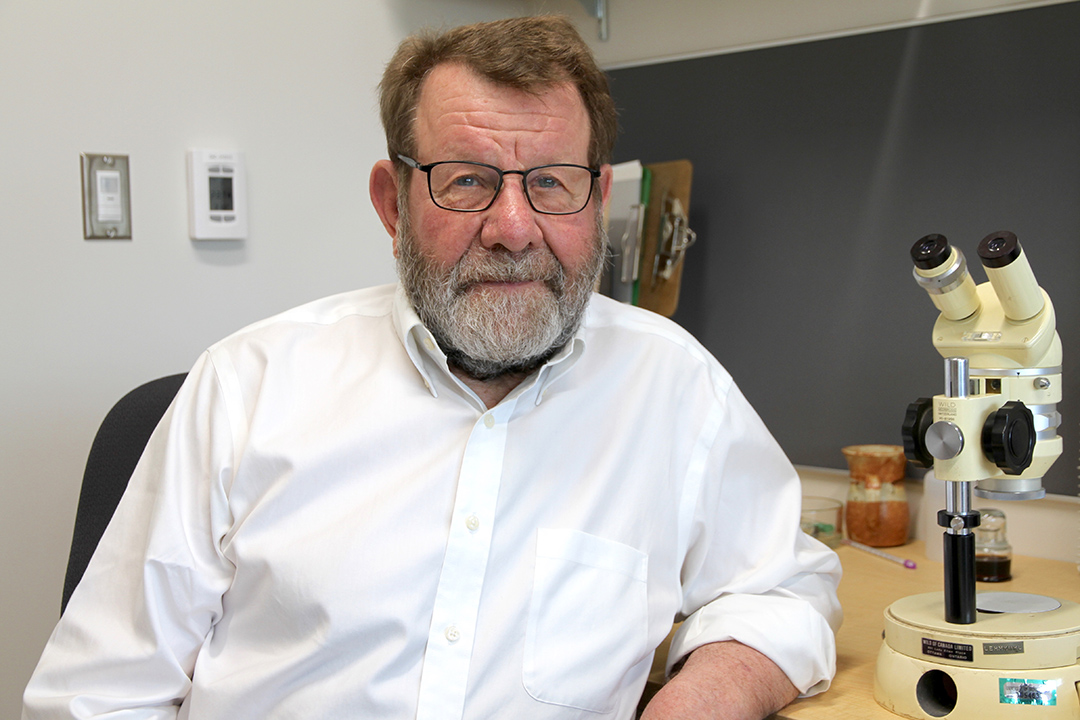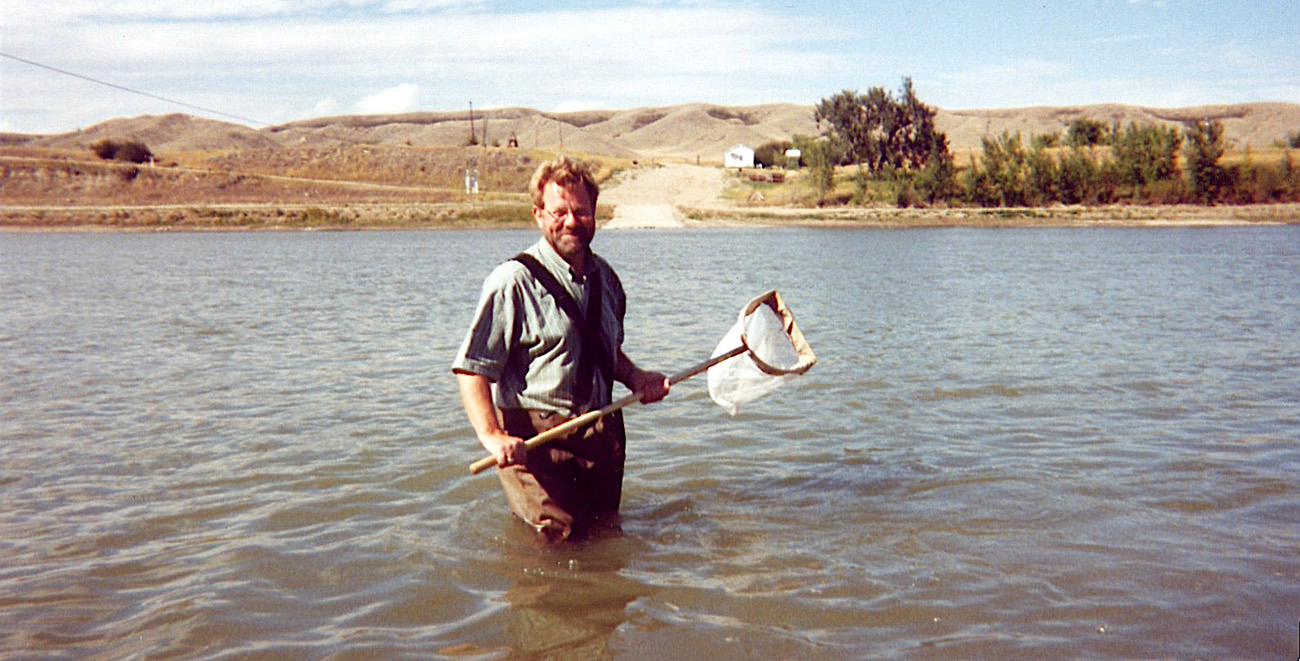
Cheers to 50-year career for USask biology professor
Dr. Dennis Lehmkuhl (PhD) came to the University of Saskatchewan 50 years ago as a young biology researcher eager to explore rivers and the life they sustain.
By James ShewagaHe never expected to still be here a half century later, now regarded as one of the world’s experts on aquatic life in the Saskatchewan River system.
“I still can’t believe it. I came for the interview back in May of 1969 and here we are today, 50 years later,” said Lehmkuhl, who turns 77 on August 22. “I didn’t anticipate being here this long, but I found such interesting aquatic biology here that it never occurred to me to leave.”
July 1 officially marked retirement day after 50 years at USask for Lehmkuhl, who was the second-longest serving full-time employee on campus, trailing only law professor Ronald C.C. Cuming, who is in his 52nd year of teaching.
Raised in rural South Dakota, Lehmkuhl grew up exploring local ponds as a youngster, collecting frogs and bugs in what started as a hobby and became a passion and a profession. Shortly after earning his PhD, he arrived in Saskatoon and immediately began exploring the South Saskatchewan River, documenting how pollution and pesticides and the new Gardiner Dam were affecting aquatic life up and down the river.

“It was summertime when I came and I went down to the river and started looking around and unfortunately I found the city’s sewage outlet and then upstream I found something strange with the water so cold and clear, and of course that was the result of the new dam,” Lehmkuhl recalled. “The Saskatchewan River system is one of the most unique systems in terms of aquatic insects, but a lot of species are now gone, unfortunately.”
The Gardiner Dam was built in 1967 to control flooding, produce electricity and provide irrigation for agriculture, as well as reliable water sources for urban populations like Saskatoon. Lehmkuhl’s findings—published in 1972 in the Journal of the Fisheries Research Board of Canada, Volume 29—helped lead to dam engineering changes that regulated the temperature of water that is released, to protect aquatic life downstream on the river.
In 1987, Lehmkuhl also helped the provincial government use the naturally occuring bacterial pesticide Bacillus thuringiensis to control a chronic black fly problem in a large area northeast of Saskatoon, centred around where the North and South Saskatchewan River meet. The provincial agriculture department credited Lehmkuhl and his students working on the research project for eliminating the pests, which were feeding on and killing young calves, costing producers millions of dollars a year.
“The province was having a real problem with black flies, which are terrible biting flies, and they were literally killing cattle,” said Lehmkuhl. “But we found the way to control it. Our program produced several graduate students and there is no black fly problem in Saskatchewan anymore, so I am happy about that.”
For Lehmkuhl, working with and mentoring graduate students is one of the things he is most proud of from his tenure at USask. He mentions the likes of Joseph Shorthouse, his first graduate student who went on to become the biology department head at Laurentian University, as well as Doug Smith, who has gone on to a successful 40-year career in the biology department at USask, and international student Rie Miyazaki, who followed up Lehmkuhl’s research on the effects of dams on aquatic life in Japan.
In her 2006 thesis, Miyazaki credited Lehmkuhl’s 1972 discovery on the need to regulate the temperature of water released from dams, with helping save a river system in Japan: “The Hienuki River would be a dead river,” she wrote. “The river has been supporting life of local residents for thousands of years. Dr. Lehmkuhl saved our river.”
So, what’s next for Lehmkuhl? Retirement plans include travel, particularly to Japan, where his wife Makoto is from. But once a researcher, always a researcher, and Lehmkuhl hopes to do a little exploring out in the field—or along the river, to be precise.
“I will partly travel the world, Japan especially,” said Lehmkuhl, whose three children all attended USask and whose son Paul now works on campus. “I’ll be reading all the books that I bought and didn’t have time to read, and I’ll be checking out a couple of sample sites that I have been curious about and now have the time to do it. So, I am looking forward to it all.”

